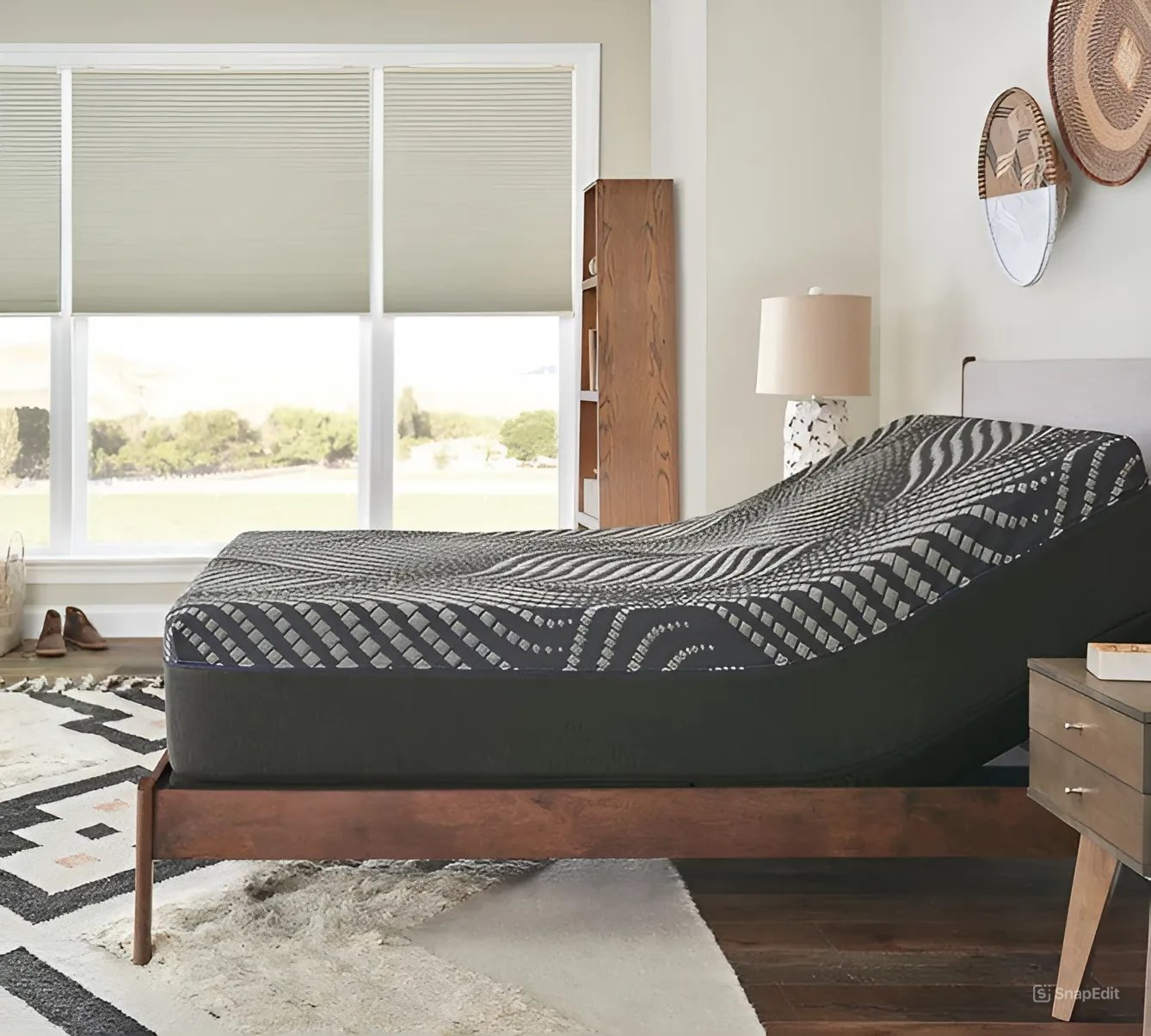
The Complete Guide to Buying a New Mattress Online (Part 2)
What type of mattress to choose?
The next thing to look at is the types of mattresses that are available and narrow down your choices to find a bed that suits your needs perfectly.
While the process of selecting a mattress essentially boils down to your personal preference, there is a range of mattress models and styles available on the market with the most common materials being the memory foam, innerspring, pocketed spring, latex and hybrid mattresses.
This section will outline the pros and cons and price range for the different mattress types to help you whittle down your options and avoid being overawed with options when shopping online.

- Memory foam mattress
As its name implies, memory foam mattresses are made predominantly of foam. These mattresses have a low average price point and an average lifespan of 7 years.
Memory foam creates the sensation of sinking into a mattress and being embraced. This type of cushion is known to mould into your body shape when you press your weight against it, slowly regaining its original shape once the weight is lifted. This extra cushioning and support also makes memory foam perfect for side sleepers and those with physical ailments due to the vast amount of pressure relief they provide for sensitive areas like the shoulders, hips and lower back.
Another unique property of memory foam is that it keeps motion transfer to a minimum. For this reason, the mattress is ideal for light sleepers who are easily affected by any movement your partner makes during sleep.
One of the most common issues that people experience with memory foam is that the material retains heat. So, if you are someone who gets warm when sleeping, you may want to consider memory foam materials that incorporate gel-infused cooling agents.
- Innerspring mattress
One of the most popular and widely used mattress types, innerspring mattresses primarily incorporate coiled springs as the mattress foundation.
These beds work best for those in need of major support namely back sleepers, stomach sleepers and heavier sleepers. They also serve as a bouncier option to a foam finish which can oftentimes feel a bit too solid.
While the innersprings do lend some support to the body, they fall short in terms of pressure relief and are not as effective in absorbing bed movement. This is because the steel coils are intertwined into a single unit so that with every movement your partner makes, the coils will react as a cohesive unit.
Innerspring mattresses are one of the most popular on the market due to their relative affordability. Although this is due to the material wearing out faster since the coils become depressed with the pressure over the years, causing the mattress to sag and stiffen.
You may find yourself having to replace an innerspring mattress sooner than you would another type of bed.
- Pocketed spring mattress
Perhaps the more advanced of spring-base mattresses, a pocketed spring mattress has up to 3000 springs interwoven into each fabric pocket. They can be custom-built with differing firmness on each side, allowing your body weight to be evenly spread out for maximum support.
When you lie on the mattress, the open-spring formation inside will compress and provide a comfortable level of resistance to each pressure point. They can also be adjusted to soft, medium or solid tensions depending on how you like your mattress. Additionally, by making use of the stand-alone pocketed coil technology, the mattress is able to provide equal support to a couple sleeping together despite their differing body weights. That way, both parties experience reduced motion transfer during the night which results in a more restful night’s sleep.
Pocketed spring mattresses also offer superior ventilation by utilising an open-spring formation that promotes air movement better than their foam counterparts. This helps the mattress feel less stuffy which can improve comfort.
That said while the individual coils in a pocket spring mattress are designed to respond better to your bodyweight, it also runs the risk of wearing these coils out faster due to constant pressure exerted over the years.
- Latex mattress
Mattresses made of latex are generally durable and ideal for individuals prone to allergies given that they prevent dust mites from collecting.
If fancy having that extra bounce in your mattress, latex can be a good option especially if you are a combination sleeper who needs to be able to move around and change positions with ease throughout the night.
Latex is also a good choice for those whose partners tend to toss and turn while sleeping. The material stifles motion, meaning you are unlikely to experience the effects of your partner moving about in bed. This allows the both of you to get a better night's sleep. But despite being relatively soft and cosy, the mattress does not provide the same sinking experience you get from a memory foam mattress. This means latex may not be the best fit for those who require deep pressure relief at the shoulders or hip.
Latex mattresses generally have a longer-than-average lifespan of up to 8½ years and a higher average price point compared to other types of beds.
- Hybrid mattress
One of the newest mattress types is the hybrid mattress, which combines the outstanding qualities of memory foam and spring mattresses to create a durable and comfortable sleeping surface with excellent support.
Hybrid mattresses work well for a wide range of sleepers, in particular for back sleepers and combination sleepers due to the added support they provide. The foam material alleviates pressure from sensitive body parts like the hips and shoulders by dispersing your weight evenly over the surface. At the same time, the coils enhance bounce, airflow and good edge support to make getting on and off the mattress easier.
The mattress also employs the stand-alone pocketed coil technology where the sleeper receives less motion transfer at night, resulting in a more comfortable rest for anyone who sleeps on it. And because these mattresses come in a foam finish, you are less likely to develop allergies from mattress material. In terms of cost, hybrid mattresses are known to be one of the most expensive options despite having a relatively shorter average lifespan of 6 years.
What size mattress do you need?
Just as conducive to getting a good night's rest is having all the space you need in order to get comfortable.
Bed sizes accommodate the needs of all sleeping situations. This wide spectrum of options offer sleeping proportions for a young child right up to larger-sized couples and families. Most mattresses are available in five common sizes. They are the Twin, Full, queen and king sizes. Some mattresses are also available in a long twin and a super king size.
Finding the right mattress size generally comes down to several factors including your height and overall physique, whether you sleep alone or with a partner, and how you sleep – do you tend to spread-eagle or curl into a foetus?Also, take into consideration how much room space you have for your new mattress, especially if you are looking to get something larger. So, it is important that you measure the size of your room before you go shopping for a new mattress.
Ideally, you not only want a mattress that fits your bedroom and space, but also one that works for your needs and your lifestyle.

- Twin mattress
Measuring 92 cm wide by 188 cm long, a twin bed mattress is the smallest standard bed that you can get. While it boasts a relatively small frame, a twin mattress is quite versatile and can be ideal for children or single adults. It is also suitable for individuals with limited space such as those in studio apartments.
- Full mattress
A double mattress is 138 cm wide and 188 cm long. This is a common bed size for couples with smaller homes or for guest rooms.
A double mattress is versatile and practical. While it will usually accommodate two adults, it is also ideal for singletons or children who can afford to have the extra space to spread out.
- Queen mattress
At 153 cm wide and 203 cm long, the queen mattress is the most sought-after mattress size on the market. A queen bed fits perfect in any master bedroom and offers plenty of space for couples or individuals who like some extra room to stretch or move around in bed.
- King mattress
The king mattress has a width of 193 cm and a length of 203 cm. This makes it the widest mattress size on the market hence owning a king requires a spacious master bedroom. The bed is large enough to accommodate couples who prefer to share the bed with their young children.
The size of a king bed works out to placing two identical twin beds side by side. This gives you the option of having two separate twin mattresses fitted onto a king bed frame, perfect for couples who do not share a preference in the same mattress type or require the same support.
- Twin XL mattress
A long twin mattress, also referred to as a king single, is a slightly longer version of a single mattress at 92 cm wide and 203 cm long.
At 15 cm longer than a single, a long single bed is a good solution for taller teenagers and individual adults residing in smaller spaces such as a studio apartment or shared room.
- Super king mattress
The longest mattress on the market, the super king is a whopping 183 cm wide and 213 cm long.
It is generously proportioned to suit taller individuals, in particular those over 180 cm tall. Of course, people of average height might also benefit from a super king mattress depending on how many people and children are sharing the bed.

